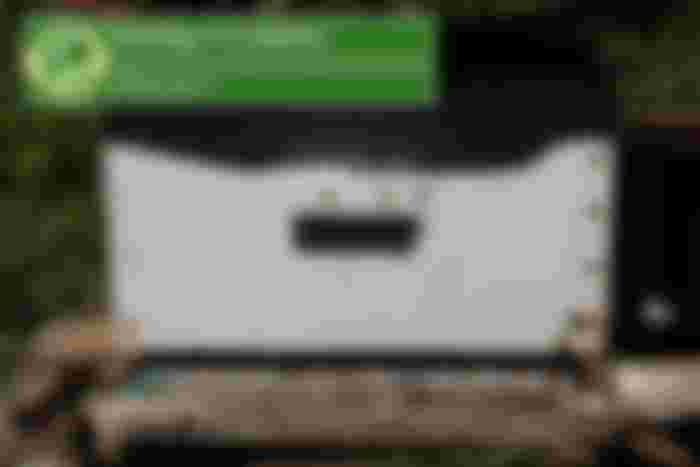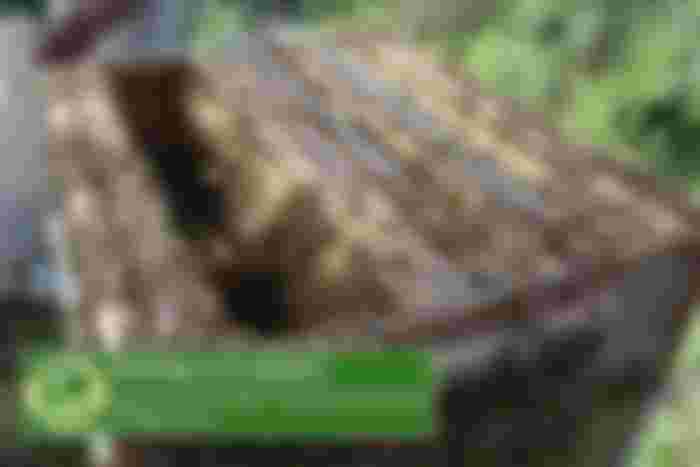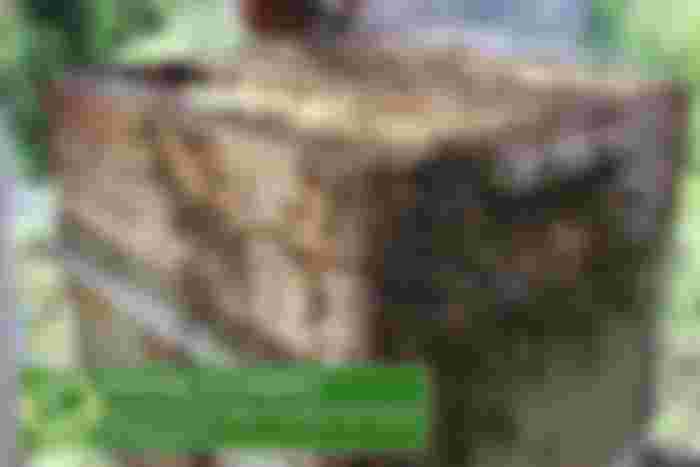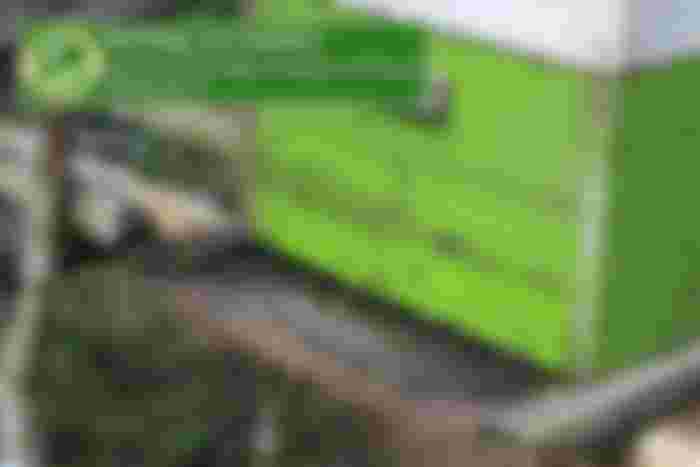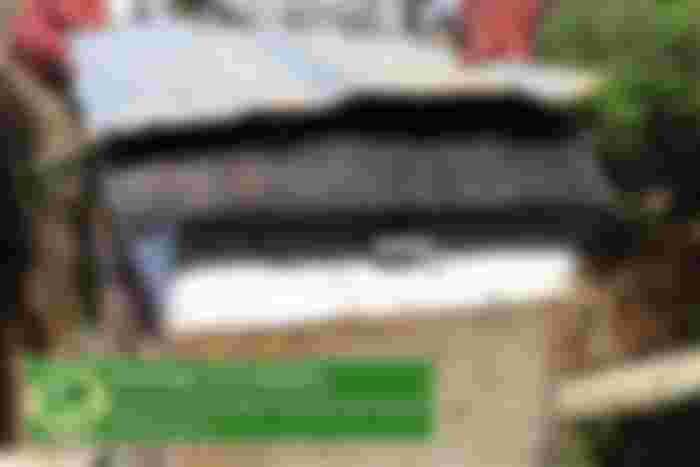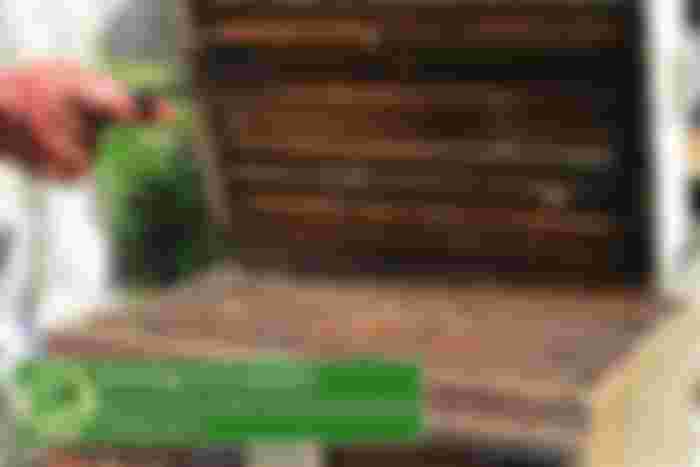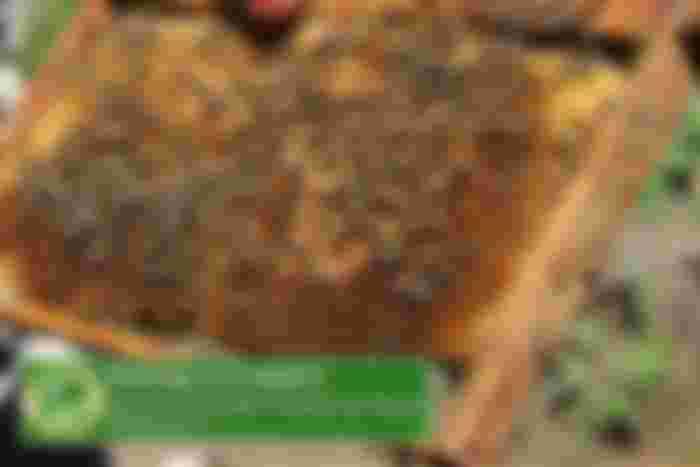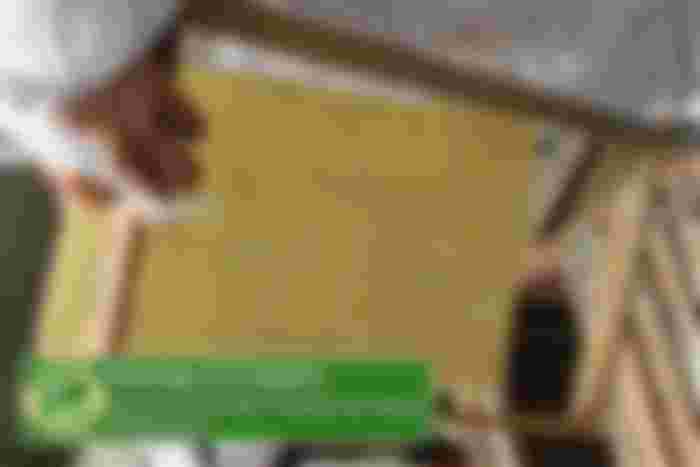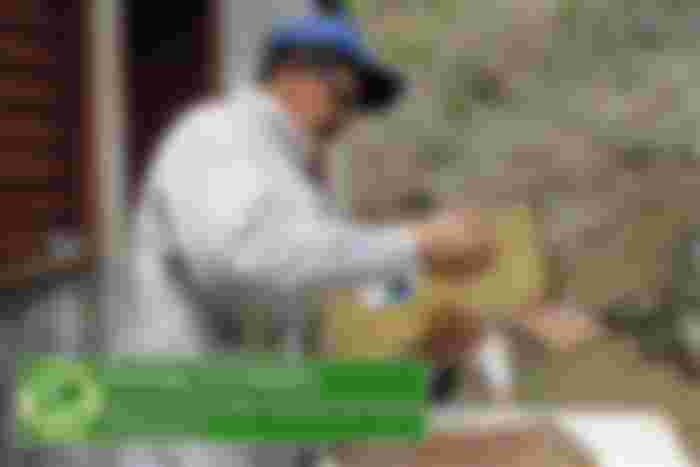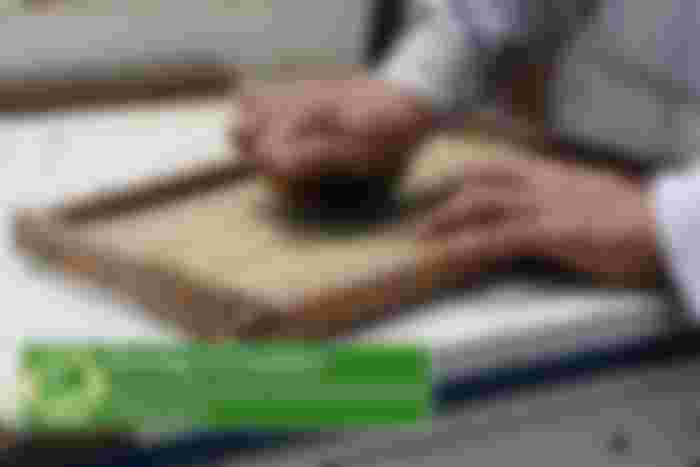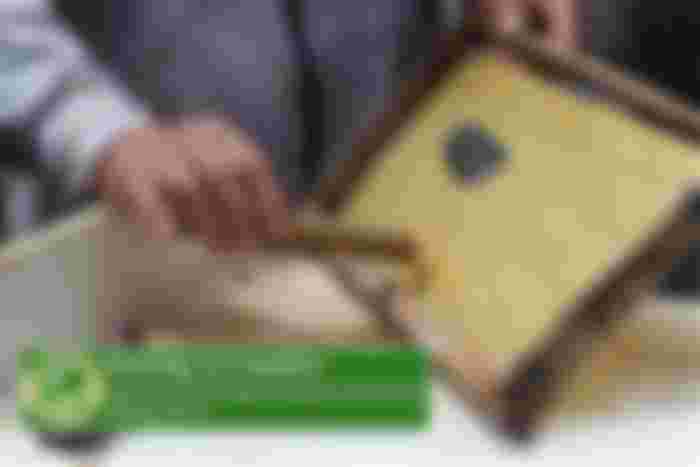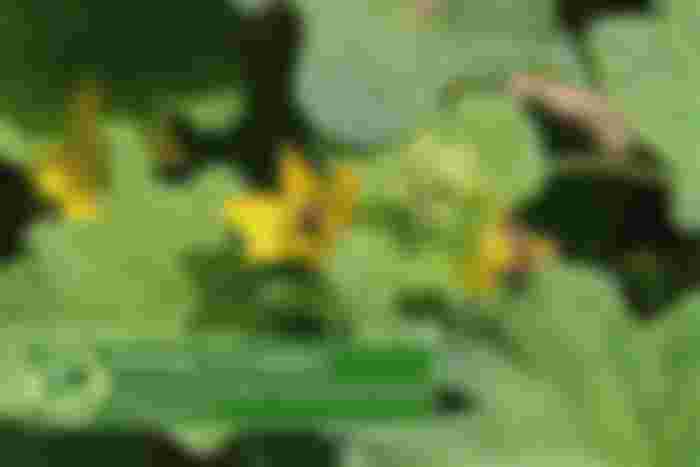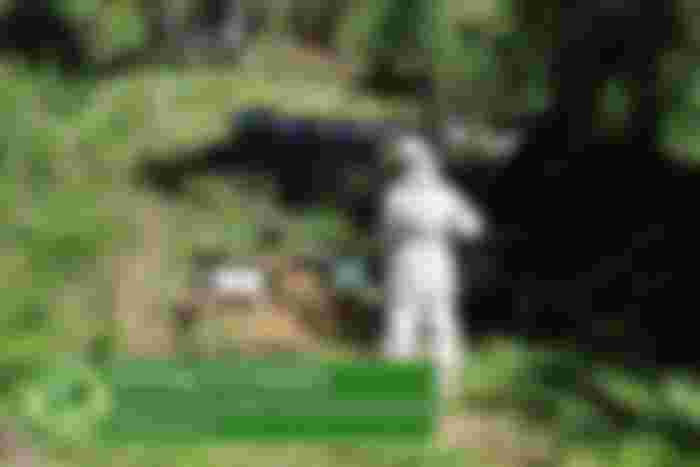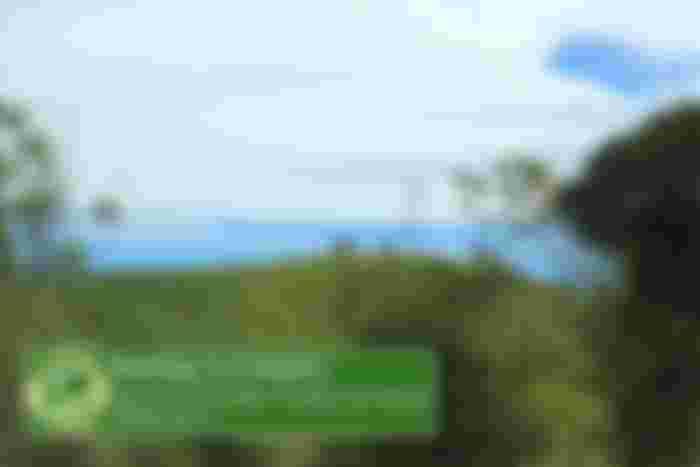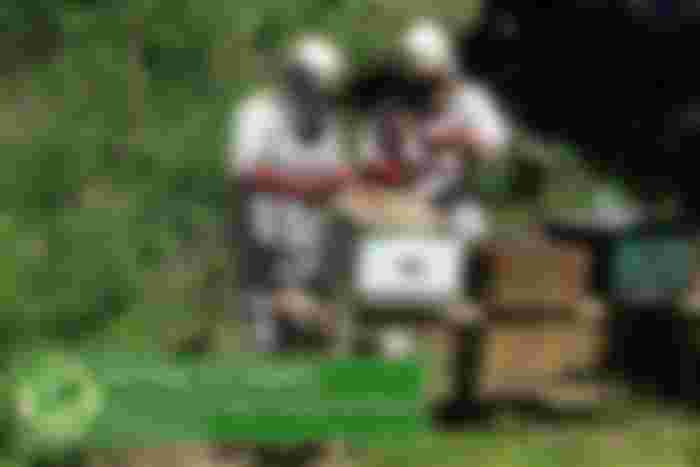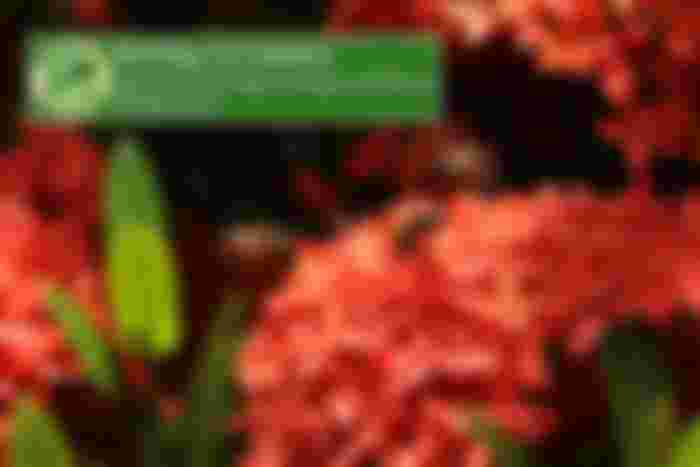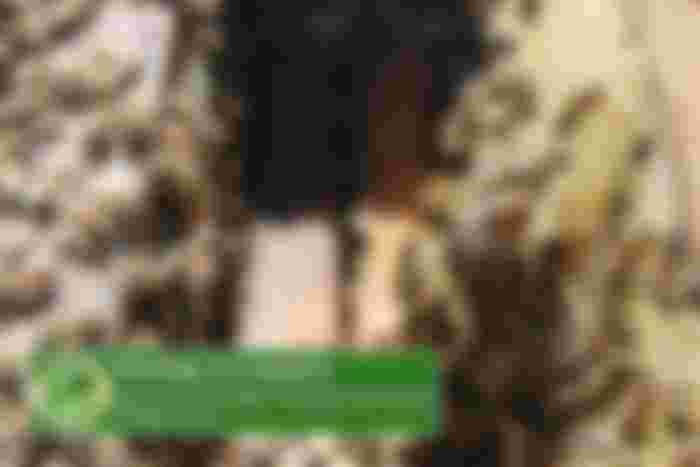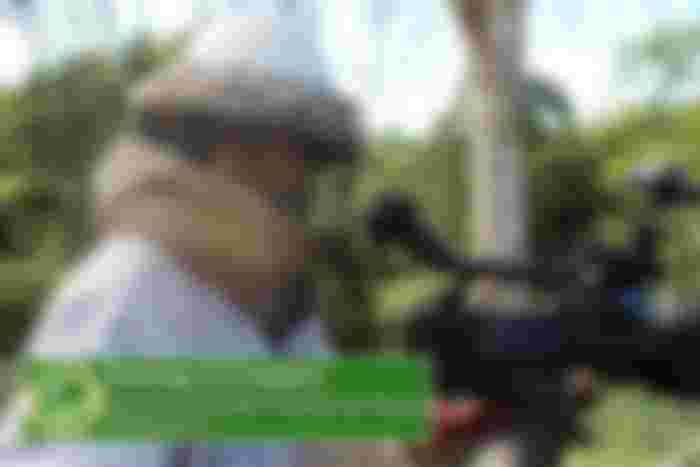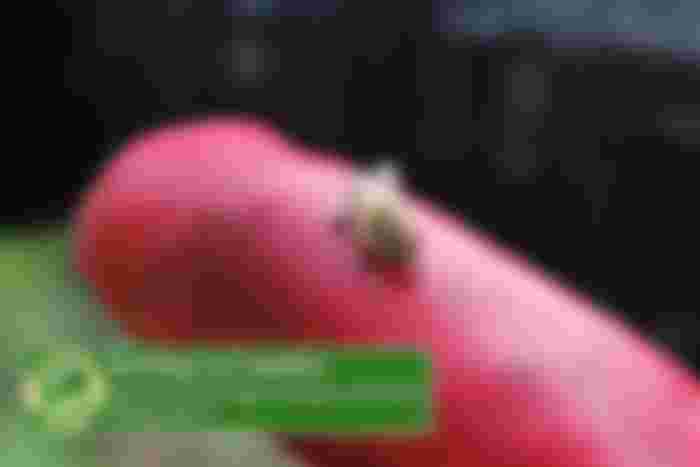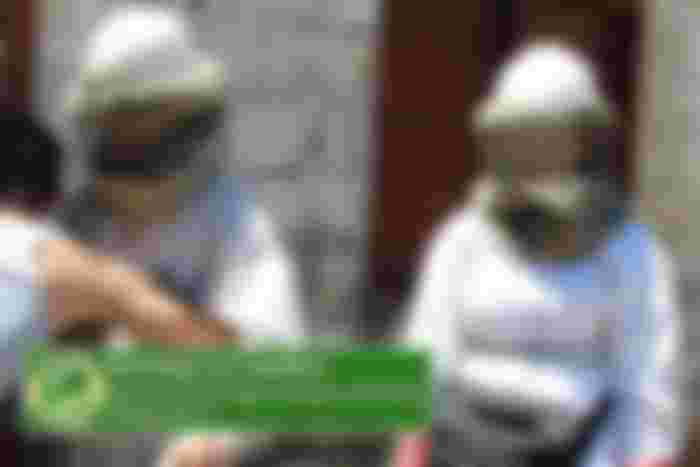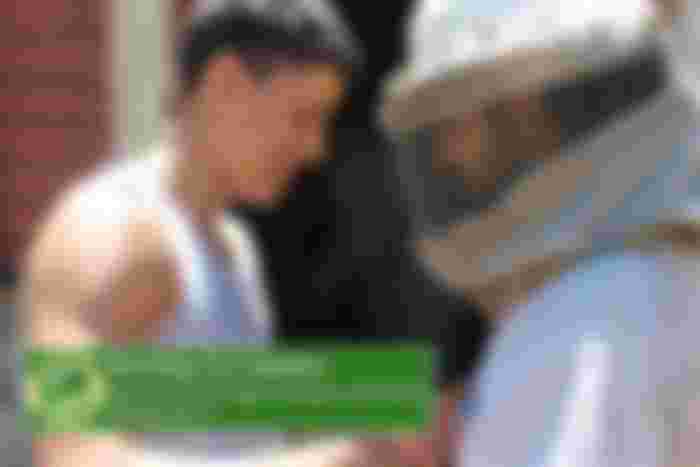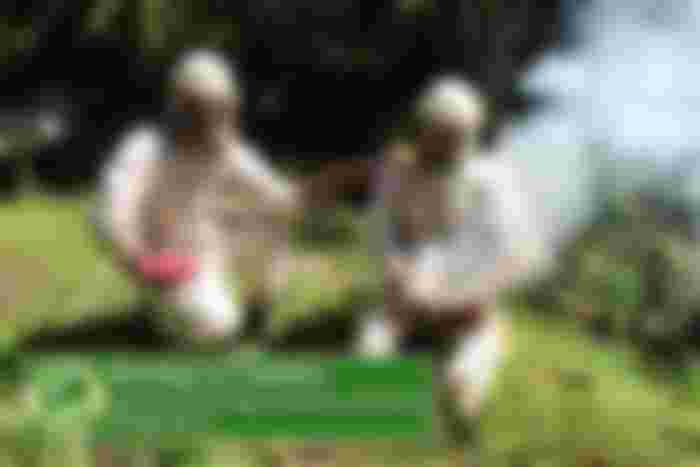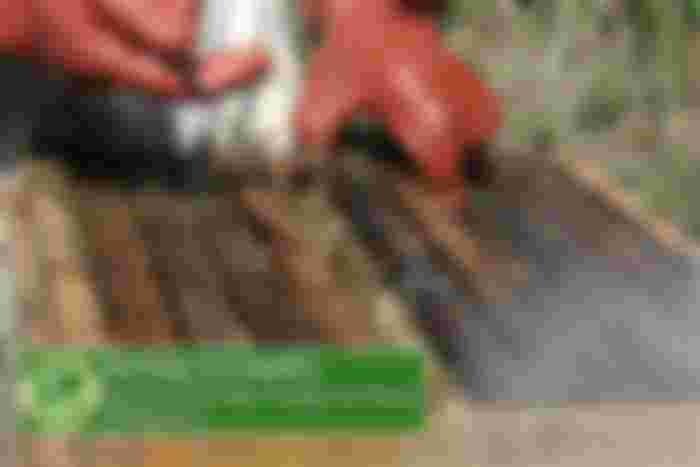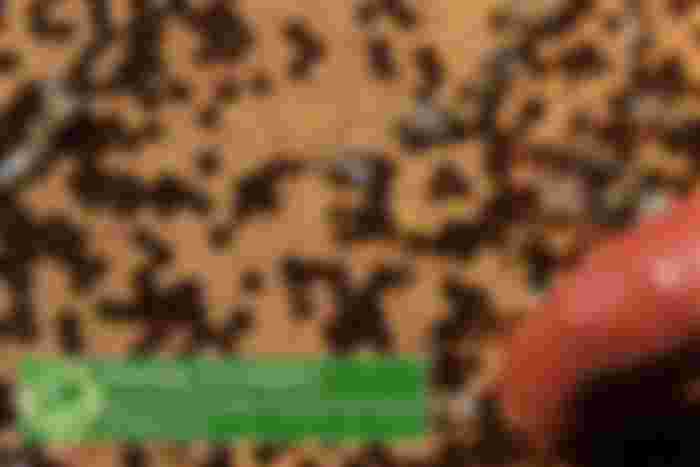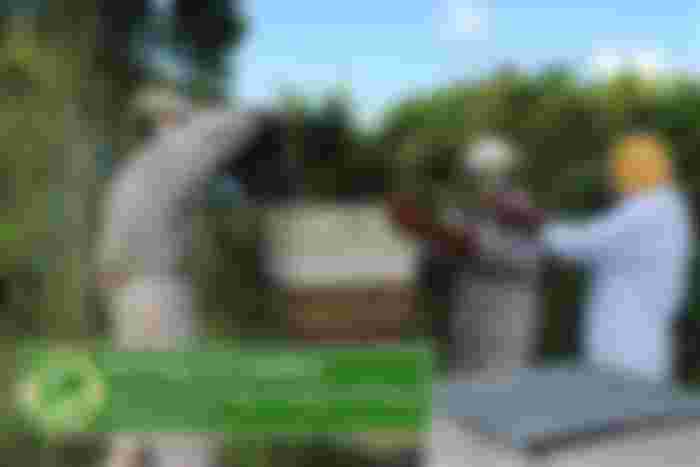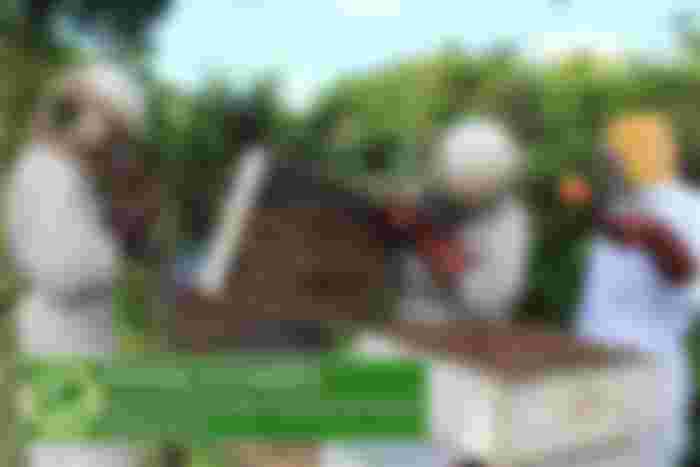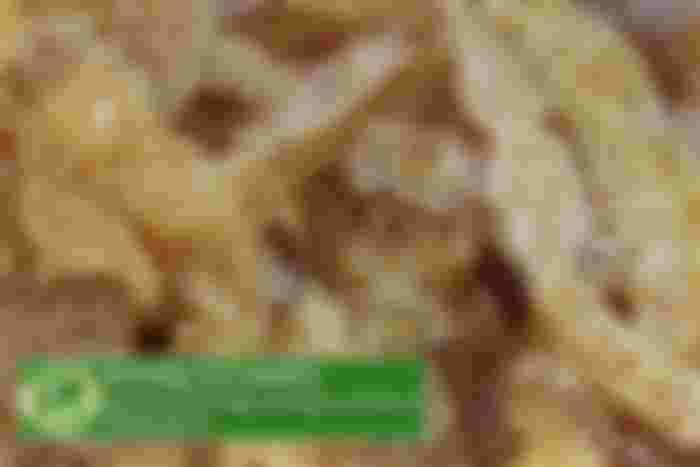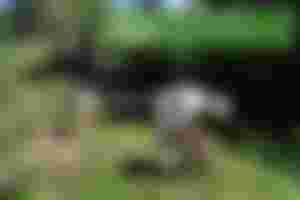
Beekeeping is an activity that involves raising bees in an organized manner, for this purpose several beehives are arranged in a place that meets the appropriate conditions so that the bees can inhabit, reproduce and develop, this place is called Apiary and must be away of human dwellings as well as of stables, sheds, pastures or any other place where domestic animals are raised, in order to avoid the attack of bees that may feel threatened by the presence of other species.
In this extensive Manual we will explain the fundamental aspects to start in bee breeding, from the construction of the hives, the safety implements that are essential to enter the apiary, the most appropriate places to establish the apiary and how is carried out Honey harvest from the hives.
1. The Hives:

Bees can live in different types of spaces that they consider adequate and safe for the establishment of their colonies, the space that bees inhabit is called a hive, and within it the bees (using the wax they naturally produce) will build the honeycombs in which they will deposit the larvae, as well as the honey with which they will feed their young. The hives are divided into 2 sections The Brood Chamber and The Honey Supers:
1.1 The Brood Chamber:
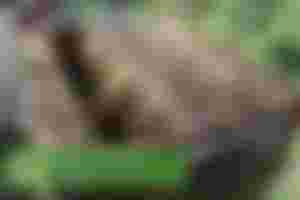
It is the heart of the hive, this is where the queen bee lives, depositing its eggs in the different hexagons that make up the honeycombs, meanwhile the worker bees will deposit the honey they produce in each of these hexagons to ensure the feeding of the larvae once they hatch.
When the bees have fully developed the brood chamber, it means that that hive is ready to begin the storage of honey, and when the beekeeper notices it, he places the first honey super on the hive.
1.2 The Honey Supers: These are the levels that are placed above the brood chamber, this is where the honey that the beekeeper will harvest is produced.

For bees, the honey supers constitute the space where they will store honey to feed in the winter period (in the case of the stationary weather regions) and in the rainy season (in the case of the tropical climate regions).
In both cases the worker bees will be unable to go out to look for pollen, and to keep all the members of the hive fed they will require the reserve of honey that they have constituted with so much effort.
2. Construction of the Hives: It is true that bees have the capacity to build their own hive, but when we are dedicated to raising bees, it is most convenient for them to inhabit structures that are easy for us and practical to handle, so it is necessary for the beekeeper to build the structures that will inhabit the bees in his apiary.
There are many models and ways to build a hive, in the case of this Manual it is based on the methods used by the Beekeeper Camilo Lorca, who kindly attended to us and gave us his knowledge when we made the recording of Chapter 1: Beekeeping of Sowing a Country 2nd Season.
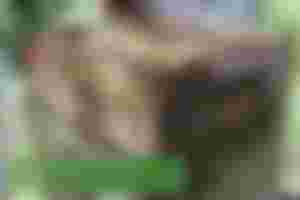
To make the walls of the hives, 4 interlocking wooden boards in the shape of a drawer are placed, which must have a guide on 2 of its sides on which the upper part of the frames that we offer to the bees will be supported for the construction of their honeycombs.
The measures of the drawers that will make up the brood chamber and the honey supers vary according to the beekeeper's criteria, however it is recommended to manufacture hives with measures that facilitate their transportation on foot inside the apiary, so it is convenient to maintain the width and height of the hives in measures between 25 cm and 50 cm.
Take into account that the measures we give to our brood chamber and honey supers must be proportional to the measures we give to the frames that will make up each of these spaces.
It is also important that both the brood chamber and the honey super have the same width on each of their faces so that there is no difficulty in attaching the honey super to the brood chamber. If it is desired that the honey supers have a lower height than the brood chamber, take into account that the frames that will be placed on the honey supers should have less height than the frames of the brood chamber.

The front wall of the drawer that will be used as a brood chamber must have a few centimeters less height than the rest of them, we are talking about a space of approximately 5 cm. This small opening will be the door through which the bees will enter and exit the hive.
It is common for beekeepers to manufacture their own hives, however they can be acquired through a beekeeper who also produces them with commercial intentions, which is usually commissioned. Also the hives can be purchased in some agricultural stores, but their prices can be very high.
If you want to incur in the manufacture of hives, we recommend first making a brood chamber and a honey super. If once finished, the characteristics of them seem appropriate, we can perform the other honey supers and brood chambers using the same measures. On the other hand, a hive that meets our requirements can be purchased commercially and based on its measures to manufacture the others.
The wooden board that will make up the hive floor must have the same width as the breeding chamber on all sides, except in the front, where the entrance and exit will be, in which an additional floor space should be left between 5 cm and 10 cm.

This space will be the platform from which the bees that leave the hive will undertake the flight, and it will also serve to allow a comfortable landing to the bees that return with pollen.
With regard to the roof of the hive, the Beekeeper Camilo Lorca uses a fairly economical method to protect the hives from rain and pillage, which consists of placing a sheet of wood, on which a rubber sheet is placed, to finally place a sheet of zinc wider than the hive.
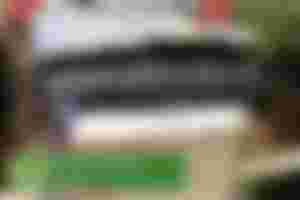
More elaborate roofs can also be made, but the important thing is that the upper part of the hive is properly protected and at the same time the roof is easy to remove to monitor the hive development and realize the honey harvest.
As for the honey supers, it is important that the drawer that will make up the walls of them has on 2 of its sides the guides for the frames, as we saw previously in the brood chamber. It is also very important to say that the honey supers do not need soil, because the idea is that they communicate internally with the breeding chamber. The honey supers also do not need entry or side holes on either side.
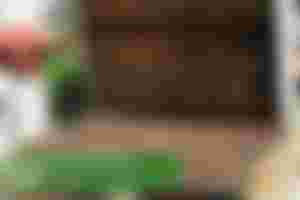
It is recommended to place up to 3 honey supers in each hive to facilitate their handling at harvest time, as well as to prevent the weight of the honey supers (once they are full of honey) causing damage to the brood chamber.
When the honey supers are placed on the hives, the roof of the hives is placed on the last honey super, in the same way the floor of all the honey supers must be hollow so that they communicate with the broodi chamber and the other honey supers, so as the roof of the last honey super should be able to be easily removed to allow the honey harvest.
Finally we have the frames that we will introduce in the brood chamber and in the honey supers, these frames fulfill the function of offering the bees a structure where they can build the honeycombs in an organized way; which facilitates the monitoring of the development in the brood chamber, and the harvest of honey in the honey supers.
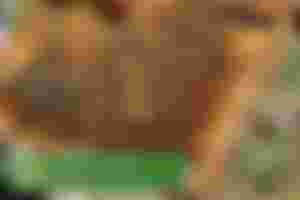
The body of the frames must have a width a little less than the width of the guides of the drawers of the brood chamber and the honey super to be able to introduce and remove them without getting stuck in the walls, also the upper part of them must be a little wider so that it can fit with the guide of the drawers.
It is advisable to place 3 or 4 lines of sweet wire in each frame, with the intention of adhering to the wire the beeswax sheet with which the frames will be prepared and on which the bees will build their honeycombs in the apiary.

3. Preparation of the Frames of the Brood Chamber and Honey Supers: Depending on the size of the hives, more or less amount of frames can be introduced in them, in the case of the hives that we had the opportunity to see in the apiary of the Beekeeper Camilo Lorca, the brood chamber and the honey supers are made up of 10 frames each one; then in the case of a strong and well developed hive we need 40 frames; 10 in the brood chamber and 30 divided by the 3 honey supers.

The frames have a very simple preparation that consists of fixing a beeswax sheet to each frame. If these paintings were taken to the apiary and introduced into the hives without fixing the sheet, this would not prevent the bees from building their honeycombs on them. However, they would do it in a way that for beekeeping purposes would be impractical, running the risk that by manipulating the frames, the honeycombs could break.
On the other hand, when the beeswax sheet is fixed, the bees will build their honeycombs in a way that allows us to extract the frames without any risk of splitting the honeycomb or losing the delicious honey.
To prepare the frames we need a tool known as Spur and a wooden board that we will use as a support. Lorca advises wetting the support board to facilitate the work of adhering the sheet to the wires of the frame, then with the spur we press to fix the sheet.
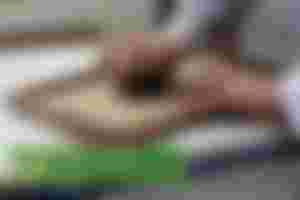
As a final step in the preparation of the frames, the beekeeper Camilo Lorca uses a candle (made by himself using beeswax) to seal the sheet to the bottom of the frame, using the same melted wax that drips from the candle. He recommends using this technique since this way the sheet is better fixed in the frame and thus we avoid that it leaves its place during the transfer to the apiary.
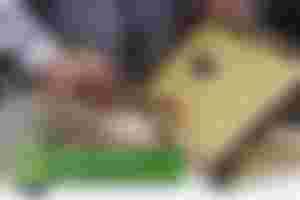
When we finish preparing the frames of the brood chamber we introduce them in the hives that we will take to the apiary for the bees to inhabit. The first hives that we will take to the apiary will consist only of the brood chamber and their respective roofs, the honey supers will begin to be added once the bees have successfully developed the entire brood chamber.
This occurs when honeycombs have been built on the total surface of all the frames, and they are full of honey. When we observe this development in the brood chamber we begin to add the honey supers, which should be added one by one until each hive has its 3 honey supers.
The first time we move a honey super to the field we will do it with their respective assembled and ready frames. Later, as the honey is harvested on the honey supers, we will take new frames to the apiary to replace the ones we have already harvested. To transfer the new frames to the apiary, it is convenient to have a structure with the same dimensions of the honey super, which we will only use to move the frames to the apiary and within it. This structure will not be used as a honey super, but to mobilize the frames preventing the sheets from being damaged.

4. Location of the Apiary: Bees leave their hives to look for pollen, which is the food of worker bees. When worker bees are well fed they are able to produce wax to build their honeycombs, honey to feed their larvae and royal jelly, which is the food of the queen bee.
A bee can be separated from its hive within an approximate radius of 3 km to look for the pollen of the flowers offered by the plants that exist in the area, so it is convenient to establish the apiary in places where floral diversity and vegetation abound.
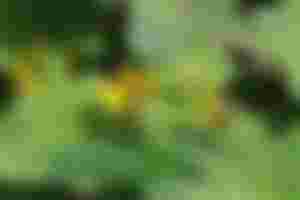
It is also convenient that in the place where the apiary is going to be established there are trees, since they will also provide flowers so that our bees can collect pollen, also the shade of the trees will help maintain a very pleasant temperature in the hives during the day , preventing them from getting too hot.

Apiaries can also be established near areas where agriculture is practiced, however if they are plantations that are constantly fumigated with agrochemicals, apiaries should not be located near them, since bees will be poisoned by chemicals when they travel the plantation Looking for flower pollen.

If the plantation that is fumigated is very close to the apiary (200 m for example) the agrochemicals can reach the hives due to the wind and severely damage all the bees in the apiary, so it is not advisable to establish apiaries in places very close to plantations in which agrochemicals are used as usual.
Bees exist in almost any part of the world and can adapt to almost all types of weather, there are no major limitations to establish the apiary, however a prudential distance of 500 m must be taken from where there are places where other animal species are raised and where humans live. This distance is to prevent bees from attacking humans or livestock, which can happen if they feel that their territory is threatened by the presence of other species.
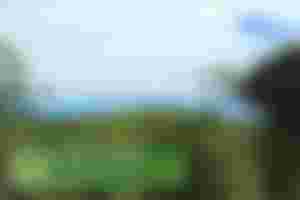
To start the construction of the apiary, the plants that are only in the place where we will place the hives should be removed, for this we can take as an example the apiary of the Beekeeper Camilo Lorca; the hives in this apiary are located in different sections, which is convenient due to the slope relief that the place presents. In these sections about 10 hives can be located, however if there is a wider space we can locate more hives, which should have a small distance of a few centimeters apart between them.
It is not convenient either for the environment or for bees that cut trees in areas near the apiary; the only criterion that should be taken to cut down a tree when establishing an apiary is that it presents one of these 3 conditions; disease, strongly colonized by termites, or that its trunk is weakened and can cause the tree to fall in a very close time. In one of these 3 cases the determination can be made to cut down the tree to prevent it from falling on our hives.
We emphasize that the only area that should be free of plants or vegetation is where the hives will be located and where the access roads to the apiary will be made, in places where the hives will not be located, trees should not be cut down or the vegetation removed; as we would be eliminating food sources for our bees and forcing them to fly further to look for pollen, we would also be doing unnecessary damage to the environment.
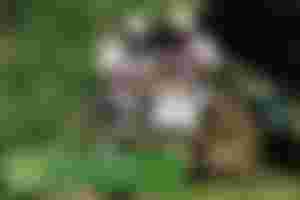
It is not convenient to locate a large group of hives in a single sector of the apiary, it is best to place them in groups of 30 to 50 hives in different sectors of the apiary, in this way better control of bees is achieved and vegetation is not eliminated in continuous areas, since each sector of the apiary is separated by the vegetation that naturally exists in the area. If it is the first time that beekeeping is practiced, the most advisable thing is to start with few hives, maximum 10.
Once the places where the hives will be located are defined and cleaned, structures must be established that allow the hives to be separated about 50 cm from the ground, this to prevent insects such as giant ants from attacking the hive, for which sticks of wood tied with sweet wire (as we could see in the apiary of the Beekeeper Camilo Lorca) can be used, more elaborate iron structures can also be used. The columns of these structures must be covered with products to prevent the ants from climbing through them, these types of products can be found on the market or burned oil can also be used.
Once the structures are ready, the first hives can be brought to the apiary to locate the bees that we acquire commercially, or that we attract to our apiary among the bees that exist in the area. It should be said that up to this point we can enter the apiary without using the beekeeping suit that is used to protect the body of the beekeeper, as well as the veil that is used to protect the face and head. Once our hives begin to be populated by bees, we will not be able to enter the apiary without carrying the aforementioned safety implements.
5. Population of Apiary Hives: While it is true that there are people or companies that sell queen bees and worker bees, there is also the possibility of attracting bees to our hives. If you want to buy a specific bee specie to populate our apiary, it is best to buy it from a producer or company you trust. However, acquiring a specific bee specie does not guarantee that their genetic characteristics will be maintained, because sooner or later they can be mixed with other species of bees that exist in the area where our apiary is located.

The most advisable reason, in our opinion, to buy bees is the immediacy with which we can populate our hives and start our production. On the other hand if you want to attract wild bees to the hives located in the apiary, the first thing we have to know is if there are bees in abundance in the area where we are; If we are in a rural area, where there are large green areas, it is likely that there are bees in that area.
Wild bees travel in swarms, where several worker bees fly around the queen to protect her. The objective of these bees is to find a suitable place to establish their colony, so if we place the apiary in a place where there is a good abundance of wild bees, we practically only have to place the hives in the apiary so that the wild bees find them .
If we have done everything correctly, when a group of wild bees find our hives, they will realize that the place is perfect to settle and they will go looking for the rest of the swarm to indicate the direction of the place they have found to establish a new colony.

You can also catch bees to take them to our hives, but to perform this activity we recommend that you have the support of an experienced beekeeper or an agronomist who dominates this area.
6. Safety Implements Essential for Working with Bees: The safety implements mentioned in this point are essential for beekeeping work, never and under no circumstances should an apiary be visited without these elements, also nor should you try to approach hives or swarms of bees without the use of all these elements that will be mentioned below:
6.1 Beekeeping Suite:

The most common and practical is that this suit is a Overall, that is to say a single garment that will be placed in a practical way throughout the body. The suit must be made of very thick fabric to prevent the sting of the bees from penetrating through it, it is also not advisable to use buttons for the zipper of the overall, it is best to use velcro zipper or metal zipper.
6.2 The Veil:

The veil can be built using a safety helmet as a base, the helmet can be obtained at a hardware store where they sell this type of safety equipment. The canvas that will be used to build the veil adheres on the helmet, it is also convenient to use metallic mesh or some type of resistant mesh that allows good vision and air passage. It should be noted that the space between mesh cells must be smaller than the bees to prevent their passage.
When the veil is constructed, it is advised that the canvas does not fit on the head, face or neck of the beekeeper; the canvas should be loose to allow better mobility and more efficiently avoid bee stings. Likewise, the veil must have a strong rope, with which we will tie it to our body to hold it and keep it firm.
6.3 The Gloves and Boots: It is not recommended under any circumstances to use cloth gloves to enter an apiary, also nor leather gloves with little thickness. It is best to use extremely thick gloves and resistant rubber compounds, which can also be purchased at a hardware store.

On the other hand, the most recommended boots are long cane rubber boots and thick soles, these boots can be purchased commercially. In fact, the most common is that beekeepers manufacture their own suits and veils, and acquire gloves and boots on the market.
We will also need something to hold the suit to the boots and gloves, it can be done with adhesive tape to pack or with rope, but the recommendation given by the Beekeeper Camilo Lorca is to use bands composed of thick and resistant rubber, which can be acquired commercially.

Here it should be noted that each beekeeper uses the type of suit that he prefers according to his criteria; In fact, if you have the opportunity to visit different apiaries located in different regions, you will realize that each producer has different suits and veils, as well as they can vary in the methods to apply them for bee breeding.
However, regardless of the criteria that everyone may have, we do not advise that you visit any apiary without using the aforementioned safety implements, just as you must be sure that bees cannot sneak into the suit for any part of it.
7. Preparing to Enter the Apiary and Behavior Within It: At this point we would like to thank the Beekeeper Producer Camilo Lorca and his son Apicultor Kelvin Lorca, for the special attention given to our entire team to visit their apiary. Camilo and Kelvin made sure at all times that we were putting on the suits properly and also offered us the suits that were in better condition.

They assisted us in a very attentive manner while we were putting on all the implements of the suit, and patiently explained the behavior that we should adopt once we were inside the apiary.
For the placement of the suits, Camilo and Kelvin recommended that it is best to place the beekeeping suit on the clothes, that is to say that the suit should not be in contact with our skin to avoid bee sting; because the force exerted by the bee when it sticks the stinger could cause the beekeeping suit to stick to our skin and be touched by the tip of the stinger, in case it manages to pass through the thick fabric of the suit.
In fact we put on 3 pants, the shirt we were wearing and two thick sweaters like a jacket, before putting on the beekeeping suit; This as a preventive measure taken by the Beekeeper Camilo Lorca to subtract any possibility that the sting of bees could have contact with our skin.
The Veil is placed on the head and clings to the body with the rope so that it is firm and allows our comfortable mobility. The gloves are placed above the sleeves of the suit and cling to it with thick rubber bands, and likewise the lower part of the suit is placed above the boots and clings to them with the rubber band. Additionally, packing adhesive tape can be used to seal any holes left in the sleeves and at the bottom of the suit.
We emphasize that if you have never visited an apiary, it is not advisable to do so without the advice and company of an experienced professional. So you have a lot of knowledge about beekeeping, your first visit to an apiary must be done with the accompaniment of an experienced beekeeper.

We also note, for those who are reading this Manual and have not yet made their first visit to an apiary, that once we put on the suit and enter the safety zone of the apiary (that is, in the margin of separation of at least 500 m that must be left between it and the areas where humans or breeding animals live) we can not take off the suit or any implement of it, to prevent the sting of bees.
Therefore it is highly recommended that we perform all our physiological needs before putting on the suit. On the other hand, in case we need to hydrate with the suit on, we must drink the water by passing it through the protective mesh of the veil.
When entering the apiary, you must walk without running and with peace of mind, whenever you walk near a hive it is prudent to maintain a distance of at least 50 cm from it, and not pass within 1 m of the entrance from the hive, so as not to alarm or disturb the bees; Well, it should be noted that although we have the beekeeping suit and all the safety implements correctly placed, it is not convenient to disturb the bees and cause an attack towards us, since we would unnecessarily deplete the bee population of the hives that attack us; In this regard we must remember that once the bee stings and leaves the stinger in the place it has attacked, that bee will die. On the other hand it is much more uncomfortable to work when the bees are disturbed.
When entering the apiary, you must walk without running and with peace of mind, whenever you walk near a hive it is prudent to maintain a distance of at least 50 cm from it, and not pass within 1 m of the entrance from the hive, so as not to alarm or disturb the bees; Well, it should be noted that although we have the beekeeping suit and all the safety implements correctly placed, it is not convenient to disturb the bees and cause an attack on us, since we would unnecessarily deplete the bee population of the hives that attack us; In this regard we must remember that once the bee stings and leaves the stinger in the place it has attacked, that bee will die. On the other hand it is much more uncomfortable to work when the bees are disturbed.
To be able to work more comfortably and to prevent a greater number of bees from leaving the hive, beekeepers often use a tool popularly known as Smoker. To use it, burn a piece of cardboard or paper that is then introduced into the smoker with the intention of pumping white smoke into the entrance of the hive with which it is going to work, and in the hives closest to it.

When the smoke is pumped at the entrance of their hive, the bees believe that there is fire outside and they are kept inside the hive to protect themselves, while the beekeeper takes advantage to perform the work corresponding to the hive.
We only have to manipulate the hives to monitor their development and to add the honey supers once we make sure that the brood chamber is fully developed. We can also add frames of the brood chamber to hives that are still missing, however the most convenient when installing new hives in the apiary is that the brood chamber is moved with its complete frames to cause the least amount of discomfort possible to the bees.
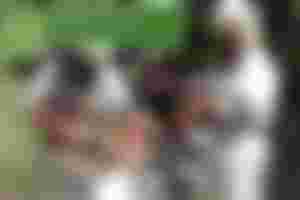
Likewise, it should be noted that once the roof of the hive is removed to supervise or add frames to the brood chamber or honey supers, the beekeeper must be quick to avoid Pillage; This is when bees from other stronger and more developed hives observe vulnerability in weaker hives, and decide to attack them with the intention of invading the hive.
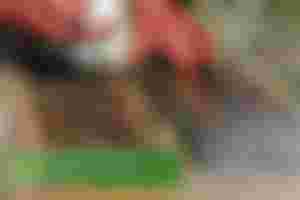
When removing frames from the brood chamber to supervise their development, special care should be taken since they can adhere to each other, and when extracted it we run the risk to breaking honeycombs, as well as hurting the bee larvaes and losing the honey produced by worker bees to feed them.

It is advisable to manipulate one hive at a time and not keep more than one exposed hive (without the roof) and also every time we finish the supervision or work in a hive, we must cover it by placing its respective roof before starting to work with another.
8. Harvest of honeycombs in the Apiary: Both when harvesting, supervising or working a hive we must take into account that bees will die since they will see us as a threat to their habitat, their queen and their young; therefore they will attack us and die later.

This is one of the main reasons why some beekeepers prefer to harvest during the night, because in this way you can reduce the number of bees that die since they are in a state of rest, so they are easier of controlling.
The honey supers, as we mentioned earlier, are the only parts of the hive from which we will extract honeycombs to harvest the honey, the honeycombs of the brood chamber should never be extracted with this intention since we would be eliminating the larvae of the hive and possibly hurt the queen bee, since she lives in the brood chamber.

The fundamental reason for harvesting the Brood Chamber is when it is full of honey and there is a risk that it will be blocked and bees may be trapped by this excess honey. However, if this management should be applied, it is recommended to do it at the beginning of the honey production season (after winter or rains have ended), and not to do so at the end of the production season (when winter or heavy rains will start).
It is also extremely important to know that before starting the Winter Season (in the case of stationary weather regions) and before starting the Rainy Period (in the case of tropical weather regions) at least one full Honey Super should be left unharvested; because in the winter or during heavy rains the bees will not be able to go out to look for pollen and will need the reserve of honey that they have stored in the honey supers for these seasons.
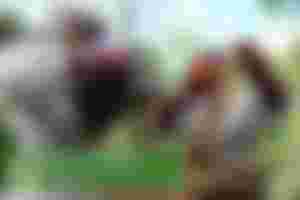
If the harvest of all honey supers were carried out before winter or heavy rains, worker bees will not be able to feed and will die; when this happens, the queen will also die, since it is the worker bees that produce royal jelly (which is the queen's food).
There is also a tendency for some beekeepers to feed bees with sugar water or sugarcane juice, which can be done in times of shortage of flowers or to strengthen the feeding of a very weak hive. On the other hand there are beekeepers who instead of leaving a reserve honey super for bees to feed during the winter or the rains, think that it will be enough to introduce artificial feeders with water and sugar or sugar cane juice into the hive.
This is a cruelty against bees, since that food is very poor for worker bees compared to the pollen they collect or the honey they produce, with this incorrect practice there is a risk that several bees will perish due to their poor nutrition. To artificially feed the bees we could only recommend foods specially formulated for them.
However, it is best to respect the natural order of things and allow bees to consume their honey reserves during the seasons of heavy rain or winter, since this is the real purpose for which naturally bees accumulate more honey than they need to feed their young.
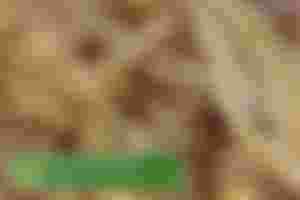
It is preferable to subtract the honey super that will be left in each hive to feed the bees to the pre-winter harvest or rainy season, rather than cause them to be malnourished; with which the bees suffer and also the development of our apiary is delayed.
9. Withdrawal: The harvest is the last activity that should be carried out in an apiary, since to avoid pillage it is most convenient to monitor or work the less strong hives first, and end with the harvest or work in hives with larger populations of bees. While the Beekeepers Camilo Lorca and Kelvin Lorca made the harvest we could notice that the bees do not stop attacking the apicultural costumes, they even attacked our cameras; it should be remembered that the bees will attack whenever they feel threatened, however, when they begin to extract honeycombs from the honey supers, the bees attack with greater force as we are taking away their production.
In the case of the beehive that we harvest, it has 3 honey supers above the brood chamber, which means that this beehive has a good development and manages a high population of bees, so it is natural that when we remove the roof of this beehive we will see surrounded by bees in a few seconds. Even when Lorca finished the extraction of the honeycombs and placed the roof on the hive again, the bees were still annoying and kept us surrounded.
To withdraw from the apiary it is important to know that you must remain with the suit and safety implements. Even so, we move away more than 500 m away, we must continue with the suit on, since it is most likely that there are still a number of bees (at least they could be between 10 and 15) that follow us, especially after having made a harvest of honeycombs.
It is best to take off the suits in the place that has been arranged for storage and dressing. Once in this place, it must be verified that there are no bees around us before we take off our suits. Likewise, if bags or sacks are used to transport the harvested honeycombs, it is convenient to open them to verify that no bees are left inside them.
From this point we only have to carry out the extraction of honeycombs, packaging and storage of honey; However, we will leave that point for another opportunity because there are several methods, from the most artisanal to the most technified, and therefore it is an issue that can be extensive. Also taking into account that the main reason for this Manual is to provide the basic knowledge for the establishment of an apiary and the care of bees.

